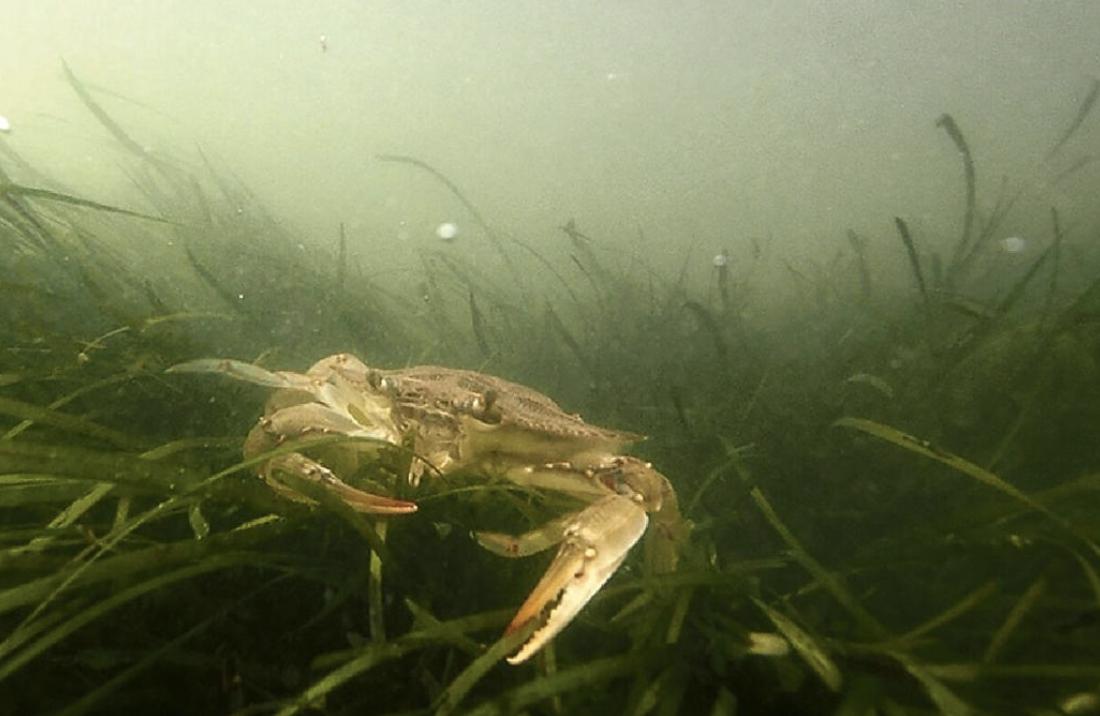The Chesapeake Bay’s “dead zone,” the oxygen-starved blob of water that waxes and wanes each summer, is forecast to be smaller than average for a second consecutive year.
A consortium of research institutions announced June 23 that it expects the volume of this year’s dead zone to be 14% lower than average. In 2020, the zone was smaller than 80% of those monitored since surveying began in 1985.
The size of the summer dead zone is driven largely by how much excess nutrients flow off lawns and agricultural fields into the Bay during the preceding January to May, researchers say. Those nutrients — nitrogen and phosphorus — fuel explosive algae growth, triggering a chemical reaction that robs the water of oxygen as it dies back. The area is dubbed a “dead zone” because of the lack of life found within it.
This year, those first five months were slightly drier than usual, causing river flows entering the Bay to be 13% below average. As a result, the Chesapeake received 19% less nitrogen pollution compared with the long-term average at monitoring stations along nine major tributaries.
Efforts to curb nutrient pollution in the Bay’s 64,000-square-mile watershed also appear to have played a role in shrinking this year’s dead zone, scientists say. The U.S. Environmental Protection Agency has joined with Delaware, the District of Columbia, Maryland, New York, Pennsylvania, Virginia and West Virginia to implement a “pollution diet” for the Bay and its tributaries by 2025.
“This year’s forecast suggests a smaller dead zone than is typical because the river flows that carry nutrients to the Bay were slightly lower than normal,” said Jeremy Testa, a researcher with the University of Maryland Center for Environmental Science. “But the amount of nutrients carried to the Bay by a given amount of flow has lessened over time due to effective nutrient management in the watershed. This is an example of a positive trajectory for the Bay.”
Oxygen is measured in the Bay throughout the year by the Chesapeake Monitoring Program, an effort involving several federal agencies, 10 academic institutions and more than 30 scientists. The dead zone forecast is produced by UMCES, the Chesapeake Bay Program, the University of Michigan and the U.S. Geological Survey.
The dead zone is typically biggest in summer, when temperatures are their hottest and oxygen is at its lowest.
Water is considered “dead” to marine life when the concentration of dissolved oxygen falls below 2 milligrams per liter. The average Chesapeake dead zone measures between 0.7 and 1.5 cubic square miles of water, the equivalent of 280,000–600,000 Olympic-size swimming pools’ worth of water, according to the Virginia Institute of Marine Science.
This year’s dead zone began forming earlier than normal because of warming temperatures in May, according to real-time estimates produced by VIMS and Anchor QEA.
Beth McGee, director of science and agriculture policy with the Chesapeake Bay Foundation, said the smaller area of low or no oxygen is good news for crabs, fish and other creatures that dwell in the Bay. But it shouldn’t obscure the fact that the states and federal partners are struggling to meet the pollution-reduction targets they set for 2025, she added.
Noting that 40% of the nitrogen that causes dead zones can be traced to Pennsylvania, McGee said: “The U.S. Department of Agriculture must provide more funding for conservation and technical assistance, and the Pennsylvania legislature should establish a state agricultural cost-share program. At the same time, EPA must hold the states, especially Pennsylvania, accountable to meet pollution-reduction requirements from all sources. Without those federal efforts, the Chesapeake Clean Water Blueprint will be yet another in the history of failed Bay restoration efforts.”
By Jeremy Cox




Write a Letter to the Editor on this Article
We encourage readers to offer their point of view on this article by submitting the following form. Editing is sometimes necessary and is done at the discretion of the editorial staff.